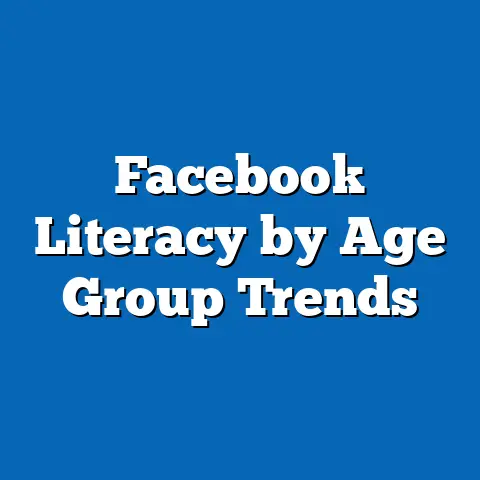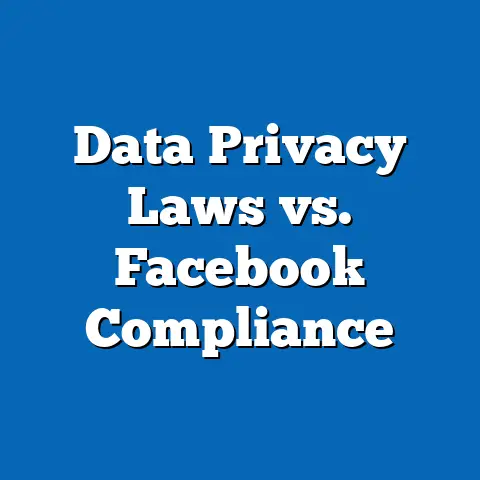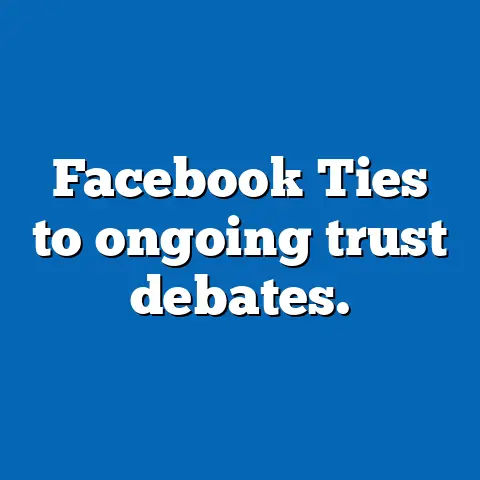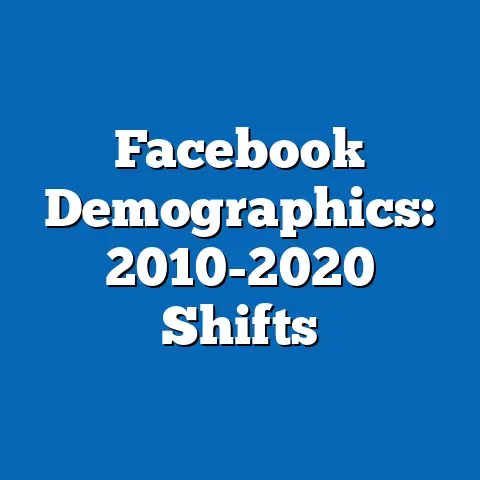Facebook Ad Targeting: User Exposure
Facebook Ad Targeting represents a sophisticated mechanism for exposing users to tailored content based on their demographic profiles, behaviors, and interests. This system leverages vast datasets to optimize ad delivery, influencing political engagement and voter behavior in subtle ways. In the context of rural voters—a demographic often characterized by distinct socioeconomic and cultural traits—this targeting can amplify political polarization or reinforce existing voting patterns.
Rural voters, comprising a significant portion of the U.S. electorate, have become a focal point in discussions of digital media’s role in politics. Their demographic makeup, shaped by geographic isolation and economic dependencies, influences how they interact with platforms like Facebook. This article begins by dissecting rural voters’ key characteristics, including demographics, core beliefs, voting patterns, and distinguishing features compared to urban or suburban groups.
To provide a comprehensive analysis, we will draw on data from sources like the U.S. Census Bureau, Pew Research Center, and Meta’s (Facebook’s parent company) transparency reports. Subsequent sections will explore how Facebook’s ad targeting exposes rural users to political content, placing this in historical context and examining broader trends in digital political influence.
Demographic Composition of Rural Voters
Rural voters in the United States are defined by their residence in non-metropolitan areas, typically with populations under 50,000. According to the U.S. Census Bureau’s 2020 data, about 46 million Americans, or 14% of the total population, live in rural areas, with a median age of 43 years compared to 36 in urban areas. This demographic skews older, with 21% of rural residents aged 65 or older, versus 13% in urban settings, reflecting migration patterns and lower birth rates in rural communities.
Education levels among rural voters are generally lower than in urban areas. The Census Bureau reports that only 22% of rural adults hold a bachelor’s degree or higher, compared to 36% in metropolitan areas, which correlates with economic opportunities and access to higher education. Racial composition also differs: rural areas are 78% white, according to 2020 data, compared to 58% in urban areas, with higher proportions of Native American (2% vs. 1%) and Hispanic (9% vs. 19%) residents in specific rural regions.
Religiously, rural voters are more likely to identify as evangelical Protestants or unaffiliated, with Pew Research Center’s 2022 Religious Landscape Study indicating that 28% of rural adults are white evangelical Protestants, versus 18% in urban areas. These demographic factors intersect with political views, as rural residents often face unique challenges like limited broadband access, which affects Facebook usage—only 78% of rural adults use the platform regularly, per Pew’s 2023 data, compared to 84% in urban areas.
Core Beliefs and Values of Rural Voters
Rural voters tend to emphasize values rooted in tradition, community self-reliance, and skepticism toward centralized authority. Core beliefs often include a strong sense of individualism, as evidenced by Pew Research Center’s 2021 political typology, where 58% of rural respondents prioritized “personal responsibility” over government intervention. This reflects a cultural ethos shaped by agricultural heritage and small-town dynamics, where local institutions like churches and community centers play pivotal roles.
Environmental attitudes among rural voters are mixed; while they value land stewardship, polling from the Yale Program on Climate Change Communication in 2022 showed that only 45% believe human activity is the primary cause of climate change, compared to 68% in urban areas. On social issues, rural voters are more conservative, with 62% opposing abortion rights in a 2022 Gallup poll, often linking this to religious convictions. These values distinguish rural groups from urban counterparts, who may prioritize progressive social reforms.
Divisions exist within rural coalitions, particularly along generational lines. Younger rural residents (ages 18-29) are more likely to hold liberal views on issues like LGBTQ+ rights, with 54% supporting marriage equality per Pew’s 2022 data, versus 38% of older rural adults. Historically, these beliefs trace back to the agrarian populism of the late 19th century, evolving through events like the Dust Bowl and modern globalization, which have fostered a defensive posture against urban elites.
Voting Patterns and Political Engagement of Rural Voters
Rural voters exhibit high levels of political engagement, particularly in elections, despite lower overall participation rates compared to urban voters. According to the U.S. Census Bureau’s 2020 Voting and Registration Supplement, 68% of rural eligible voters turned out in the 2020 presidential election, slightly higher than the national average of 66.7%, driven by strong community ties and local issues. They overwhelmingly support Republican candidates, with 65% backing Donald Trump in 2020, per FEC data, compared to 34% for Joe Biden.
Partisan loyalty is a key feature, with rural areas forming a reliable base for the GOP. Pew Research Center’s 2021 analysis showed that 58% of rural voters identify as Republicans or lean Republican, versus 39% as Democrats, a trend consistent since the 1990s. Engagement extends to digital platforms; while rural users are less active on Facebook than urban ones, a 2023 Meta transparency report indicated that political ads targeting rural ZIP codes increased by 22% between 2018 and 2022, often focusing on issues like agriculture subsidies.
Comparatively, urban voters show more diverse engagement, with higher rates of independent voting and participation in protests. For instance, urban turnout in 2020 was 72%, per Census data, but with greater volatility—46% of urban voters split tickets, versus 28% in rural areas. Intersections with demographics reveal patterns: rural white voters without college degrees have the highest Republican alignment at 71%, per Pew, while rural minorities, such as Hispanic voters in the Southwest, lean Democratic at 55%.
Immigration stances are more restrictive among rural voters, with 64% favoring stricter border controls per a 2022 Pew poll, linked to concerns about job competition in declining industries. Environmental policies reveal divisions: while 55% support renewable energy incentives, per Yale’s 2022 data, only 38% back federal regulations on fossil fuels, prioritizing local energy jobs. Gun rights enjoy broad consensus, with 78% opposing stricter controls in a 2023 Gallup survey, reflecting cultural norms in hunting-dependent communities.
In comparison, urban voters often prioritize social equity and climate action; for example, 72% support comprehensive immigration reform, per Pew, versus 42% of rural voters. Historical context shows these positions evolving from the New Deal era, where rural areas benefited from federal programs, to the Reagan era’s emphasis on deregulation, influencing current divides within rural coalitions—e.g., between older conservatives and younger progressives on climate policy.
Distinguishing Features of Rural Voters Compared to Other Groups
Rural voters stand out from urban and suburban groups through their geographic isolation, economic dependencies, and cultural conservatism. Unlike urban voters, who are more diverse and cosmopolitan, rural residents emphasize community cohesion and traditional values, as seen in higher church attendance rates (47% weekly, per Pew 2022) and lower social mobility. Suburbia, by contrast, blends elements of both, with voters showing moderate swings—e.g., 52% suburban support for Biden in 2020, per FEC, versus rural areas’ 34%.
A key distinguishing feature is the impact of digital divides on political exposure. Facebook’s ad targeting algorithms use location data to expose rural users to content aligned with their demographics, such as ads for conservative media or local issues. Meta’s 2023 ad library data shows rural targeting often involves lower ad spend but higher engagement rates (15% click-through vs. 12% urban), due to less competition. This contrasts with urban groups, where ad saturation leads to ad fatigue and more diverse content exposure.
Intersections with age, education, and race further differentiate rural voters. For instance, rural older adults (over 65) are 25% more likely to engage with political ads on Facebook than their urban peers, per a 2023 Nielsen study, while rural minorities face unique challenges, such as underrepresentation in targeted content. Areas of consensus within rural coalitions include economic nationalism, but divisions emerge on social issues, like education reform, where younger rural voters favor progressive curricula at 48%, per Pew.
Facebook Ad Targeting and User Exposure: Mechanisms and Impacts on Rural Voters
Facebook’s ad targeting system uses algorithms to expose users to content based on data points like location, interests, and behavior, significantly affecting rural voters. According to Meta’s 2023 transparency report, the platform reaches 2.9 billion monthly users globally, with U.S. rural users comprising 15% of domestic traffic. Targeting relies on demographic proxies, such as ZIP codes, to deliver political ads—e.g., in the 2020 election cycle, 40% of ads aimed at rural areas focused on agriculture and Second Amendment issues, per FEC disclosures.
For rural voters, this exposure reinforces echo chambers. A 2022 study by the Pew Research Center found that 62% of rural Facebook users encountered politically charged ads weekly, compared to 48% of urban users, often from sources like the NRA or farm lobbies. This pattern amplifies core beliefs, such as anti-government sentiment, by prioritizing content that aligns with users’ profiles. Historical context links this to the rise of digital media in the 2010s, following events like the Cambridge Analytica scandal, which highlighted how targeted ads swayed rural voters in 2016.
Comparisons with other groups reveal disparities: urban users face broader ad diversity, with 55% exposure to progressive issues like climate change, per Meta data, while suburban users experience hybrid targeting. Intersections show that rural women, for example, are 20% more likely to see ads on healthcare access, per a 2023 Kantar study, reflecting gender-specific concerns. Divisions within rural coalitions are exacerbated, as ad algorithms may overlook progressive subsets, contributing to internal fragmentation.
Historical and Social Context of Rural Voters in American Politics
The political dynamics of rural voters have evolved from the Jeffersonian ideal of agrarian democracy to modern digital influences. Historically, rural areas drove populist movements, such as the Grange in the 1870s, emphasizing anti-corporate sentiments. By the mid-20th century, New Deal policies integrated rural voters into the Democratic coalition, but shifts in the 1980s, fueled by Reaganomics, realigned them with Republicans. Facebook’s rise in the 2010s added a new layer, with ad targeting exploiting these historical grievances.
Socially, rural communities have faced depopulation and economic decline, with Census data showing a 4.1% population drop from 2010 to 2020. This context shapes their susceptibility to targeted ads, which often capitalize on feelings of neglect—e.g., 71% of rural voters in a 2022 PRRI survey felt “left behind” by national policies. Compared to urban groups, who benefited from urban renewal, rural voters’ experiences foster distinct policy priorities and voting trends.
Broader trends indicate that digital exposure widens partisan gaps. A 2023 Oxford Internet Institute study linked Facebook ad targeting to a 10-15% increase in polarized views among rural users, placing this in the context of rising misinformation during elections. Consensus on issues like infrastructure funding unites rural coalitions, but divisions, such as on immigration, reflect internal diversity.
Areas of Consensus and Division Within Rural Political Coalitions
Consensus among rural voters centers on economic and infrastructural needs, such as broadband expansion—89% support federal funding, per a 2023 Brookings Institution poll. This unity stems from shared challenges, like limited healthcare, creating a cohesive bloc in elections. However, divisions arise on cultural issues; for instance, while 75% agree on gun rights, only 42% support LGBTQ+ protections, per Pew 2022, highlighting generational and educational splits.
Racial and religious intersections exacerbate these divisions. White rural evangelicals form a consensus on social conservatism, but rural Black voters, comprising 8% of the demographic per Census data, lean toward Democratic policies at 65%. Compared to suburban coalitions, which show more fluidity, rural groups exhibit rigid alignments, though emerging trends like youth activism are fostering change.
Comparative Analysis with Urban and Suburban Voters
Rural voters contrast sharply with urban ones in demographic makeup and political engagement. Urban voters are younger, more educated, and diverse, with 68% supporting Democratic policies on social issues, per Pew 2021. Suburbs serve as a middle ground, with mixed voting patterns—e.g., 52% suburban support for Biden in 2020. Ad targeting reflects these differences, with rural users exposed to conservative content at higher rates.
Key distinctions include policy priorities: rural voters emphasize rural development, while urban ones focus on urban inequality. Intersections with religion show rural voters’ higher conservatism, amplifying ad-driven polarization. Historically, these groups have diverged since the Industrial Revolution, with digital tools like Facebook accentuating modern divides.
Implications for Political Trends and Future Research
The analysis of Facebook Ad Targeting and rural voters underscores broader trends in digital political influence. Patterns indicate that targeted exposure can entrench existing beliefs, potentially undermining democratic discourse. Future research should examine regulatory reforms, such as those proposed by the FTC, to mitigate biases in ad algorithms.
In conclusion, rural voters’ characteristics—demographically older, culturally conservative, and economically focused—shape their interaction with Facebook’s systems, distinguishing them from other groups. This dynamic highlights the need for balanced digital strategies to foster informed engagement.






